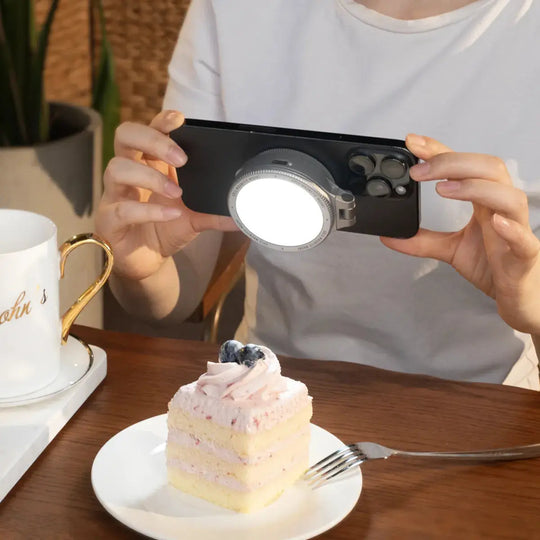Unleash Your Creativity: Discover the Game-Changing Lighting Gear Every Creator Needs!
Lighting is often the unsung hero of visual storytelling, playing a crucial role in how images and videos are perceived. Whether you're a photographer, videographer, or content creator, the right lighting can dramatically elevate your work, transforming mundane scenes into captivating narratives. This article delves into the various types of lighting equipment that can be a game-changer for creators, helping to enhance their artistic expression and storytelling abilities. From continuous lights that provide a steady glow to the dynamic bursts of flash lighting, we'll explore how each type serves unique purposes in different creative scenarios. We'll also touch on essential features to consider when selecting lighting gear, ensuring you find the perfect tools for your projects.

Types of Lighting Equipment
Understanding the different categories of lighting equipment can significantly impact your creative process. The major types include continuous lights, flash lights, and ambient lights, each serving distinct roles in photography and videography. Continuous lights offer a constant source of illumination, ideal for video and portrait work, while flash lights provide the ability to capture stunning images with controlled bursts of light, perfect for freezing fast-moving subjects. Ambient lighting, often the subtle backdrop in any scene, can set the mood and enhance the atmosphere of your work. As you explore these different lighting types, consider how they can be used individually or in combination to enhance your creative vision.
Continuous Lighting
Continuous lighting refers to any lighting source that remains on continuously, as opposed to flash lighting, which provides brief bursts of illumination. This type of lighting is particularly advantageous for video production, as it allows creators to see how the light interacts with their subjects in real-time. Common options include LED and fluorescent lights, which are known for their energy efficiency and low heat output. A friend of mine, a budding filmmaker, recently switched to LED panels for her short films. She found that the consistent lighting helped her maintain a specific look throughout her scenes, saving her hours in post-production. Continuous lights are incredibly versatile; they can be adjusted to suit various settings and can be easily relocated, making them a staple for any creator’s toolkit.
Flash Lighting
Flash lighting is a technique that provides a rapid burst of light, ideal for capturing fleeting moments with precision. This type of lighting excels in photography, particularly when dealing with fast-moving subjects like athletes or wildlife. Flash lights offer several key features, such as adjustable power settings and various light modifiers, which allow for creative control over how the light is applied. I recall a photography workshop where the instructor demonstrated the dramatic effects of flash lighting. He used a speedlight to freeze the action of a dancer mid-leap, producing a stunning image that showcased both motion and detail. For creators looking to achieve high-quality images with well-defined subjects, mastering flash lighting can be invaluable.
Ambient Lighting
Ambient lighting encompasses the natural and artificial light sources that fill a space, contributing significantly to the mood and atmosphere of a scene. It includes sunlight streaming through a window, street lamps illuminating a cityscape, or the soft glow of a lamp in a cozy room. Effective use of ambient light can elevate your creative work, creating depth and texture. For instance, a friend who is an interior designer often utilizes ambient lighting in her photos to highlight the inviting atmosphere of her spaces. By adjusting the position of her subjects relative to the available light, she captures images that feel warm and welcoming. Using ambient light effectively can enhance the emotional resonance of your work, making it more engaging for your audience.
Features to Consider When Choosing Lighting Gear
When selecting lighting equipment, there are several critical features creators should consider. Adjustability is key; being able to modify the brightness and color temperature allows for greater creative control. Portability is another factor, particularly for creators who frequently shoot on location. A lightweight, compact setup can make a significant difference in your ability to transport gear. Additionally, consider the power source of your lights—battery-powered options can offer flexibility in remote locations, while plug-in lights provide unlimited use in studio settings. Understanding your individual needs and the specifics of each project can guide you in choosing the right lighting gear, ultimately enhancing your creative output.
Maximizing Creative Potential Through Effective Lighting
In conclusion, lighting is a foundational element that can greatly influence the success of any creative endeavor. Understanding the various types of lighting equipment, such as continuous lights, flash lights, and ambient lighting, is essential for creators looking to enhance their work. By carefully considering the features of each type of lighting gear and how they align with your creative goals, you can unlock new possibilities in your visual storytelling. Don’t hesitate to experiment with different lighting setups; the right configuration can lead to stunning results that truly reflect your artistic vision.





